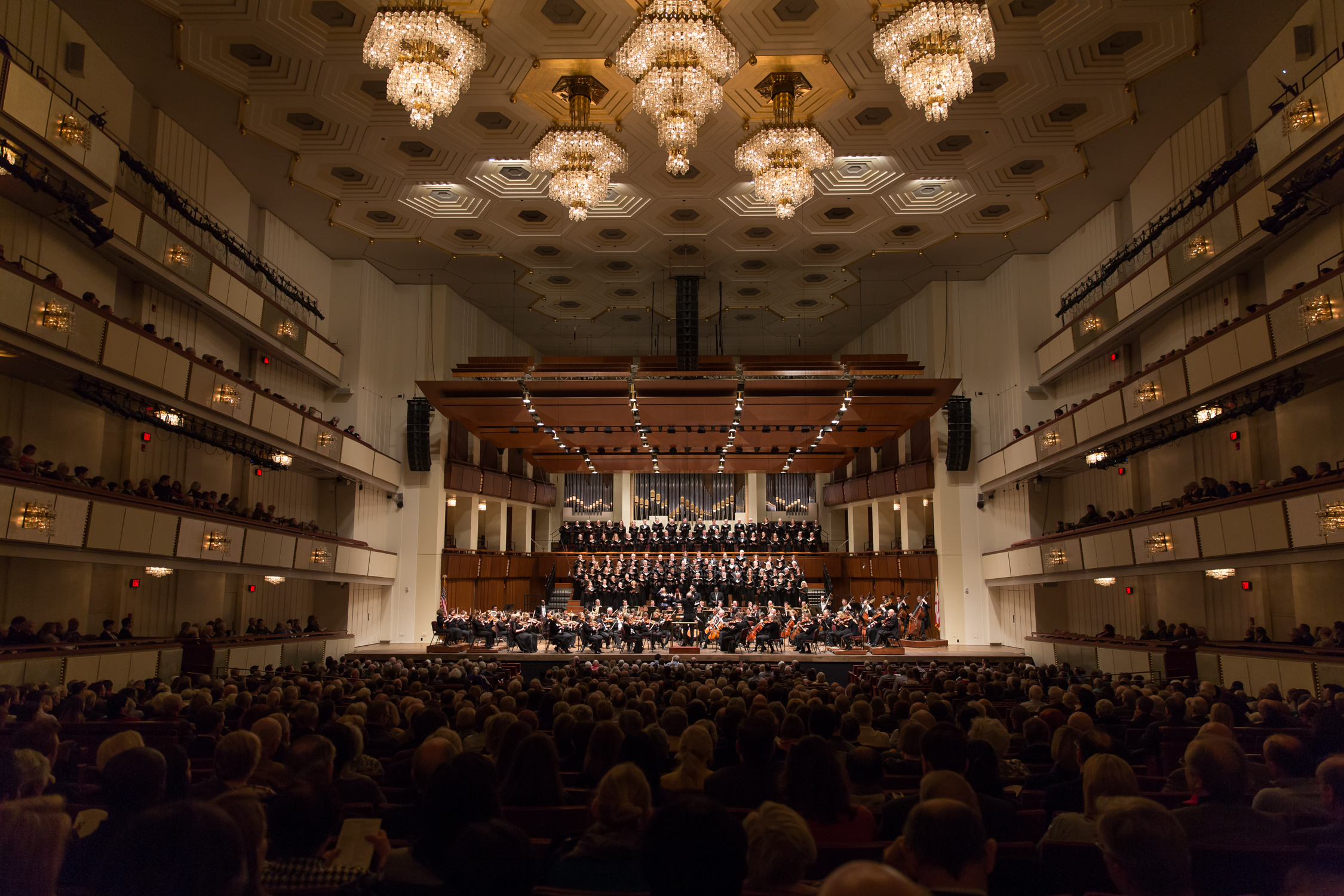I attended Thursday night’s (March 22) performance of Verdi’s Requiem by the National Symphony Orchestra, which was repeated on Friday and Saturday nights, all close to sell out performances. (This post is a follow up report to my March 15 preview on background for the Requiem.) You can say what Verdi’s Requiem is, but you can’t say what it’s not. It is a requiem. It is also a beautiful piece of music with equally beautiful choral and soloist parts. It is a religious work and experience. It is dramatic and can be considered an opera or an oratorio. It is a great work of art, and for these performances, it was also a cultural happening capped by an outstanding performance.
Side view of conductor, orchestra, soloists, and chorus. Photo by Scott Suchman and courtesy of the National Symphony Orchestra.
The audience was crammed with people and the stage was crammed with performers, instruments, and expectations (trumpets at one point even appeared in the side wings of the concert hall). To call this a performance by the National Symphony Orchestra is accurate but not complete. Above and behind the orchestra was seated four premier opera soloists, a soprano (Leah Crocetto), a mezzo soprano (Veronica Simeoni), a tenor (Russell Thomas), a bass-baritone (Eric Owens), the Washington Chorus led by Christopher Bell, and the Choral Arts society of Washington led by Scott Tucker. This constellation of players constitutes a happening and led us all to expect we were in store for a great performance, but those expectations were raised even higher by our knowledge that NSO’s new conductor, Gianandrea Noseda has achieved notoriety for conducting the Requiem. It was also a happening because Maestro Noseda was introducing his Washington audience to one of his signature works.
Soloists in front row, right to left, Eric Owens, Russell Thomas, Veronica Simeoni, and Leah Crocetto. Photo by Scott Suchman and courtesy of the National Symphony Orchestra.
Even though I am not religious, I once visited the Vatican Museum in Rome to view the great paintings of Michelangelo on the ceiling of the Cistine Chapel. For me it was undertaken as an arts experience, but viewing the ceiling felt like a spiritual one. One can approach the Requiem the same way, but it is impossible to overlook its religious nature. The handout program for the Requiem contained the text in Latin and English for the mass that serves as the libretto for the Requiem. I wanted to just listen, but I also wanted to see how the music and singing were supporting the text, so I followed along as best I could. The music and singing for the Dies Irae, the wrath of God on judgment day, did raise the hair on the back of my neck as had been advertised. This was Verdi music I did not recognize. I sometimes now can recognize music I hear as being Verdi’s, and most often my misses are when it is Donizetti or maybe Rossini. However, if I had heard this work without knowing it was Verdi, I would not have guessed it. It had soft parts in addition to the hair raising parts with pounding bass drums and shimmering trumpets; it had beautiful, melodic parts, as well has as voices stressed by emotional pleading. Yet somehow to me, it always seemed reverential, and in the end, it too felt spiritual; the program book felt like a hymnal.
NSO's Music Director and Conductor Gianandrea Noseda leading the performance. Photo by Scott Suchman and courtesy of the National Symphony Orchestra.
Performances were uniformly excellent by all involved, and I feel no desire to draw distinctions, preferring to remember this as a performance of the whole; check the professional reviews linked below, all laudatory, for individual comments. I will comment on Conductor Noseda. He was the person who pulled all of these extraordinary resources together and pushed the results towards magnificence. I have only heard him and his orchestra once previously, at a dress rehearsal for a performance of Gershwin’s “An American in Paris”, which renewed my love of that work. One senses that Mr. Noseda is going to bring a host of new fans to National Symphony Orchestra performances. I am examining my calendar now. I hope that this Verdi’s Requiem becomes an annual happening.
The Fan Experience: If you wish to examine how your calendar matches up with NSO, click on this link. The following are links to professional reviews of the NSO’s performance of Verdi’s Requiem:




